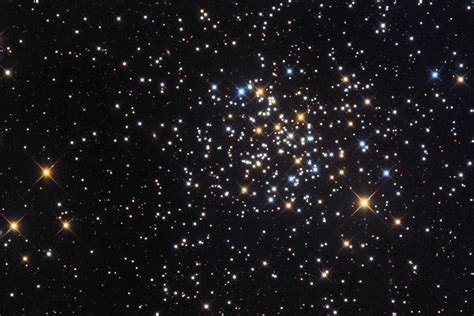Imagine the vast expanse of space, where stars twinkle like distant beacons and galaxies swirl in cosmic dances. Amid this celestial tapestry, NASA’s Hubble Space Telescope has uncovered a fascinating enigma – a mysterious star dubbed the “blue lurker.” This stellar wanderer, nestled among its luminous companions, holds secrets that hint at a tumultuous past and a remarkable journey through the cosmos.
“This star is really exciting because it’s an example of a star that has interacted in a triple-star system.”
At first glance, the blue lurker appears unassuming, resembling a typical Sun-like star. However, closer inspection reveals a hidden complexity that sets it apart from its stellar brethren. Scientists have determined that this intriguing celestial body is part of an extraordinary triple-star system, where it shares gravitational bonds with two other stars.
“We know these multiple star systems are fairly common and are going to lead to really interesting outcomes.”
The term “blue straggler” comes to mind when describing the blue lurker due to its characteristics – hotter, brighter, and bluer than anticipated for a star of its kind. These anomalies suggest that the blue lurker may have formed through mergers between stars, resulting in its unique properties.
As astronomers delved deeper into the mysteries surrounding this celestial oddity, they made a startling discovery – the blue lurker spins at an astonishing rate far beyond what was expected. While most Sun-like stars complete one rotation every 30 days, this enigmatic star whirls around in just four days. This rapid spin hints at a turbulent history involving interactions with companion stars.
“Triples are emerging as potentially very important to creating interesting, explosive end products.”
Emily Leiner from the Illinois Institute of Technology describes the evolution of this cosmic wanderer as a “super complicated evolutionary story,” shedding light on its origins within the triple-star system. The blue lurker’s tale began eons ago when it orbited a binary system comprising two Sun-like stars.
In a dramatic twist of cosmic fate around 500 million years ago, these two sibling stars merged into a single massive entity. This colossal star then transferred some of its mass to the blue lurker while dramatically increasing its rotation speed. Today, we witness the remnants of this cosmic ballet as the blue lurker orbits around a white dwarf – the relic of past stellar transformations.
“It’s really unusual to be able to put constraints on such a system as we are exploring.”
Through meticulous observations using ultraviolet spectroscopy, Hubble unveiled intriguing details about the white dwarf companion encircled by the blue lurker. The white dwarf’s scorching temperature exceeding 23,000 degrees Fahrenheit and substantial mass challenge existing theories about such stellar remnants in M67 cluster.
Leiner emphasizes that unraveling such intricate celestial narratives provides invaluable insights into stellar evolution within multiple-star systems – occurrences that shape our understanding of cosmic phenomena and explosive outcomes in distant corners of our galaxy.
As Leiner presents her groundbreaking findings at scientific gatherings like the American Astronomical Society meeting in Washington D.C., she invites us to ponder over our place in this vast universe teeming with wonders yet to be discovered.











Leave feedback about this